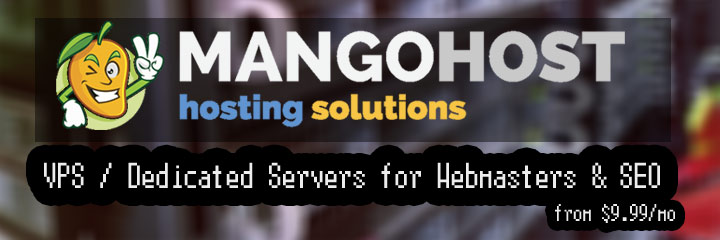
 Get the solution ↓↓↓
Get the solution ↓↓↓
protected $court is your relation or link as you would like to refer to it as.
Here is a similar piece of code of a fork of Yii3 demo that uses Cycle from a working example which you can download here:
/**
* @BelongsTo(target="Family", nullable=false)
*
* @var \Cycle\ORM\Promise\Reference|Family
*/
private $family = null;
The file that it belongs to is Product.php. This file represents the entity Product. This file also contains the following code.
/**
* @Column(type="integer(11)", nullable=true, default=null)
*/
private ?int $family_id = null;
What is a family? The family is the group that the product falls under eg. Shoes.
How does Cycle use these annotations and what is the difference between the two? If you have synchronized your database here
...then if you delete the whole Product table in say mySql, Cycle will rebuild the Product table and its table's foreign key ie. family_id for the Product table by referencing the Family entity's primary key ie. $id which is listed in the Family.php entity file and append this to your relation $family to create the foreign key family_id in the Product table. ie. $family + $id => family_id. All the necessary indexes and foreign key constraints will be created in mySql automatically.
So you have to be careful how you call your primary key in Family.php entity file or you could end up with a foreign key in your Product table such as family_family_id if you named your primary key in Family.php entity as $family_id.
So if Product tables's family_id foreign key is created automatically by the entities $family relation why have the second piece of code in your Product entity. ie. $family_id = null ? This is so that Cycle can use eg. nullable = true , default = null to automatically build mySql properties for the column ie. YES, NULL.
You will need to ensure:
use App\Invoice\Entity\Family
that points to the Entity eg. Family
That you have a reference before the annotation if you are using a framework eg.
* @var \Cycle\ORM\Promise\Reference|Family
How does the $family get used in a repository? eg. \Entity\Product\ProductRepository
public function repoProductquery(string $product_id): Product
{
$query = $this
->select()
->load('family')
->load('tax_rate')
->load('unit')
->where(['id' => $product_id]);
return $query->fetchOne();
}
In the above code the 'family' relation is being loaded and will enable the product view to use code
<?= $product->getFamily()->family_name;?>
to retrieve the family_name from the Family entity.
Points: $product is passed from the ProductController here:
...using
//load Entity\Product BelongTo relations ie. $family, $tax_rate, $unit by means of repoProductQuery
'product'=>$productRepository->repoProductquery($this->product($request, $productRepository)->getProduct_id()),
and getFamily() is a function in the Product Entity similar to your getCourt() with importantly this piece of code on line 134 that retrieves the relation ...
//relation $family
public function getFamily(): ?Family
{
return $this->family;
}
Notice that the above getFamily() function has the ?Family type which points the Product Entity to the Family Entity.
How can I lazily load related entities?
/**
* @BelongsTo(target="App\User\User", nullable=false, load="eager")
*
* @var \Cycle\ORM\Promise\Reference|User
*/
private $user = null;
Answer: Remove load="eager" or load="null".
Our community is visited by hundreds of web development professionals every day. Ask your question and get a quick answer for free.
Find the answer in similar questions on our website.
Do you know the answer to this question? Write a quick response to it. With your help, we will make our community stronger.
PHP (from the English Hypertext Preprocessor - hypertext preprocessor) is a scripting programming language for developing web applications. Supported by most hosting providers, it is one of the most popular tools for creating dynamic websites.
The PHP scripting language has gained wide popularity due to its processing speed, simplicity, cross-platform, functionality and distribution of source codes under its own license.
https://www.php.net/
Yii is a simple yet high performance generic component framework based framework. It is known for its high performance, but above all, it is famous for its simplicity. This framework appeared in December 2008. It allows you to use third-party code, and its Gii code generator allows you to quickly create basic structures from which you can build your own solutions.
https://www.yiiframework.com/
DBMS is a database management system. It is designed to change, search, add and delete information in the database. There are many DBMSs designed for similar purposes with different features. One of the most popular is MySQL.
It is a software tool designed to work with relational SQL databases. It is easy to learn even for site owners who are not professional programmers or administrators. MySQL DBMS also allows you to export and import data, which is convenient when moving large amounts of information.
https://www.mysql.com/

Welcome to the Q&A site for web developers. Here you can ask a question about the problem you are facing and get answers from other experts. We have created a user-friendly interface so that you can quickly and free of charge ask a question about a web programming problem. We also invite other experts to join our community and help other members who ask questions. In addition, you can use our search for questions with a solution.
Ask about the real problem you are facing. Describe in detail what you are doing and what you want to achieve.
Our goal is to create a strong community in which everyone will support each other. If you find a question and know the answer to it, help others with your knowledge.